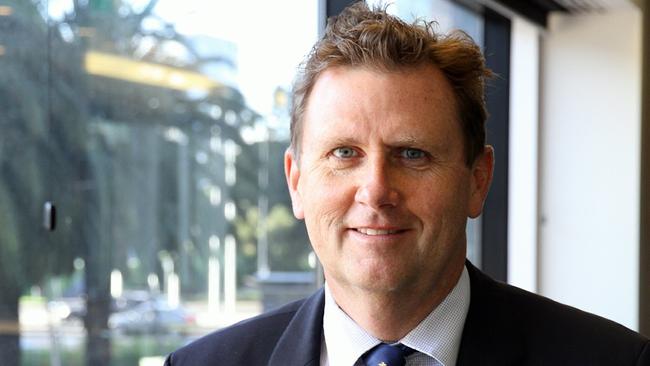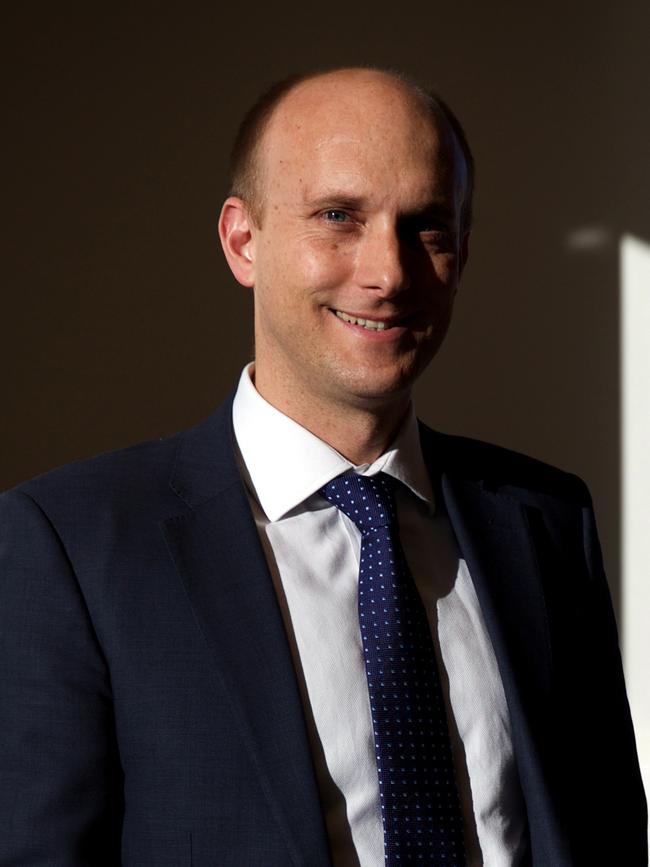‘Hawkish pause’ by RBA gives false hope that its rate raising has peaked
Despite Tuesday’s breather, most economists expect at least two more 25 basis point rate rises, lifting the cash rate to a peak of 4.6 per cent.

Another “hawkish pause” in rate increases this month risks giving false hope.
As was the case in April, the Reserve Bank delivered a “hawkish pause” on Tuesday, leaving the cash rate unchanged at 4.1 per cent while warning that “some further tightening of monetary policy may be required to ensure that inflation returns to target in a reasonable time frame”.
While the decision was broadly expected by the money market, the sharemarket rose and the Australian dollar and bond yields fell as the tone of RBA governor Philip Lowe’s post-meeting statement seemed “less hawkish” than the month before.
Whereas last month the RBA governor said recent data indicated that “upside risks to the inflation outlook have increased” and “services price inflation is still very high”, those references were removed. But based on employment, wages, inflation and house prices data since the June meeting, there’s no doubt that services inflation remains excessive and upside inflation risks remain.
By lessening the emphasis on the reasons for last month’s rate increase, the central bank acknowledged that its tightening should help the situation, but it won’t necessarily be enough.
“The statement strangely removed much of the commentary on upside risks to inflation that was present in the two previous months at which the RBA tightened,” said NAB chief economist, corporate and institutional Ivan Colhoun.

“In our view those risks have not disappeared, but a pause statement obviously requires justification for a pause, hence the focus on risks to economic growth.”
NAB expects June quarter CPI to show little or no moderation in the trimmed mean.
September quarter CPI data will be “quite challenging” for the RBA’s inflation forecasts as will returning inflation to 3 per cent “in a reasonable time frame” as higher award wages, electricity prices, rents, telecommunications, rates, postal and insurance charges all come through.
“These will squeeze spending further, but also likely require a policy response,” Mr Colhoun said.
NAB continues to expect a further half a per cent increase in interest rates in coming months.
On the economy, the RBA statement omitted the longstanding language that the board was “seeking to keep the economy on an even keel” and that the path to a soft landing was “a narrow one”.
Dr Lowe noted instead that the board expected the economy to “grow” but the path to achieving “this balance is a narrow one”.
Most economists still expect at least two more 25 basis point rate rises to a peak of 4.6 per cent.
Goldman Sachs Australia chief economist Andrew Boak saw the statement as a “hawkish hold”.
He expected the cash rate to go to 4.85 per cent to return inflation to target on a “credible time frame”, while also arguing that the RBA’s omission of the language about keeping the economy on an even keel meant it was “incrementally less worried about recession risk” in Australia.

“In context, the policy rate is only 30 basis points above RBA’s nominal estimate of ‘neutral’ and about minus 2 per cent in real terms, the unemployment rate is currently about 35 basis points below when the RBA started the tightening cycle, and house price growth is annualising at 15 per cent,” he said.
“That said, today’s outcome signals a more gradual approach to tightening.”
He expected the RBA to lift rates by 25 basis points in August, November and December. Mr Boak also said he saw “two-sided risks” stemming from upcoming changes to the RBA’s institutional structure and board personnel and longer-term upside risks to inflation expectations.
Westpac chief economist Bill Evans said his reasons for expecting the RBA to raise the cash rate again remained.
He lifted his terminal rate forecast last month after what appeared to be a clear rebalancing of the board’s reaction function at the June meeting – placing central emphasis on containing inflation pressures and wage/price expectations and less on protecting the employment gains since the pandemic. His call for a rate increase in July reflected this assessed change in its reaction function and the data flow, which has included evidence of an ongoing tight labour market, emerging wage pressures, sticky underlying inflation, and a sustained upswing in the housing market.

Of most significance in his view was RBA deputy governor Michele Bullock’s definition of the central bank’s measure of full employment as 4.5 per cent – the rate required to achieve the inflation target – which is a “long way” above the 3.55 per cent unemployment rate for May.
Mr Evans said investors should also note the recent pattern of rate decisions which saw a pause in January when there was no meeting, increases in February and March, a pause in April, increases in May and June, and a pause in July.
April and July are the months immediately preceding the quarterly inflation report and the Statement on Monetary Policy, which sees the staff update its forecasts for the board.
But unlike the pattern we have seen so far this year, Mr Evans did not expect a follow-up increase in November after an expected pause in October. His forecasts suggest progress on bringing down inflation, and evidence of some easing in labour market conditions and of very weak demand, will allow the board to remain on hold after September.
“The opportunity to ease policy will eventually come once the board is confident that a sustained return to low inflation has been achieved,” Mr Evans said.
He expected that after hiking in August and September, the Reserve Bank would keep rates on hold until May next year when conditions would allow it to begin easing.
But VanEck head of investments Russel Chesler said that the pause in rate rises “may give consumers a false sense of security” as rates would need to go higher for longer than expected and unemployment must rise significantly to return inflation to the target band. “Just because the RBA holds steady in July doesn’t mean another rate rise isn’t around the corner,” he said. “Inflation won’t meaningfully recede until there is higher unemployment.”




To join the conversation, please log in. Don't have an account? Register
Join the conversation, you are commenting as Logout